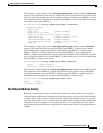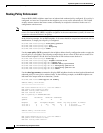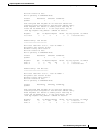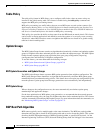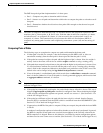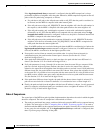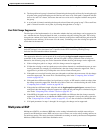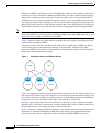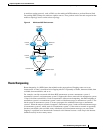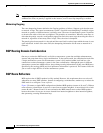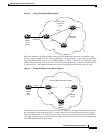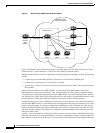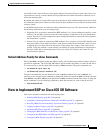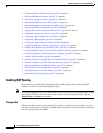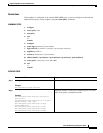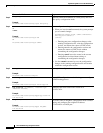
Implementing BGP on Cisco IOS XR Software
Information About Implementing BGP on Cisco IOS XR Software
RC-23
Cisco IOS XR Routing Configuration Guide
A multicast routing protocol, such as PIM, uses the multicast BGP database to perform Reverse Path
Forwarding (RPF) lookups for multicast-capable sources. Thus, packets can be sent and accepted on the
multicast topology but not on the unicast topology.
Figure 2 Multicast BGP Environment
Route Dampening
Route dampening is a BGP feature that minimizes the propagation of flapping routes across an
internetwork. A route is considered to be flapping when it is repeatedly available, then unavailable, then
available, then unavailable, and so on.
For example, consider a network with three BGP autonomous systems: autonomous system 1,
autonomous system 2, and autonomous system 3. Suppose the route to network A in autonomous system
1 flaps (it becomes unavailable). Under circumstances without route dampening, the eBGP neighbor of
autonomous system 1 to autonomous system 2 sends a withdraw message to autonomous system 2. The
border router in autonomous system 2, in turn, propagates the withdrawal message to autonomous
system 3. When the route to network A reappears, autonomous system 1 sends an advertisement message
to autonomous system 2, which sends it to autonomous system 3. If the route to network A repeatedly
becomes unavailable, then available, many withdrawal and advertisement messages are sent. Route
flapping is a problem in an internetwork connected to the Internet because a route flap in the Internet
backbone usually involves many routes.
AS 200
IMBGP
NAP
IMBGP
Router A
Unicast
router
Unicast route
Multicast route
Unicast
router
Multicast
router
Router B
Multicast
router
11754
AS 100



